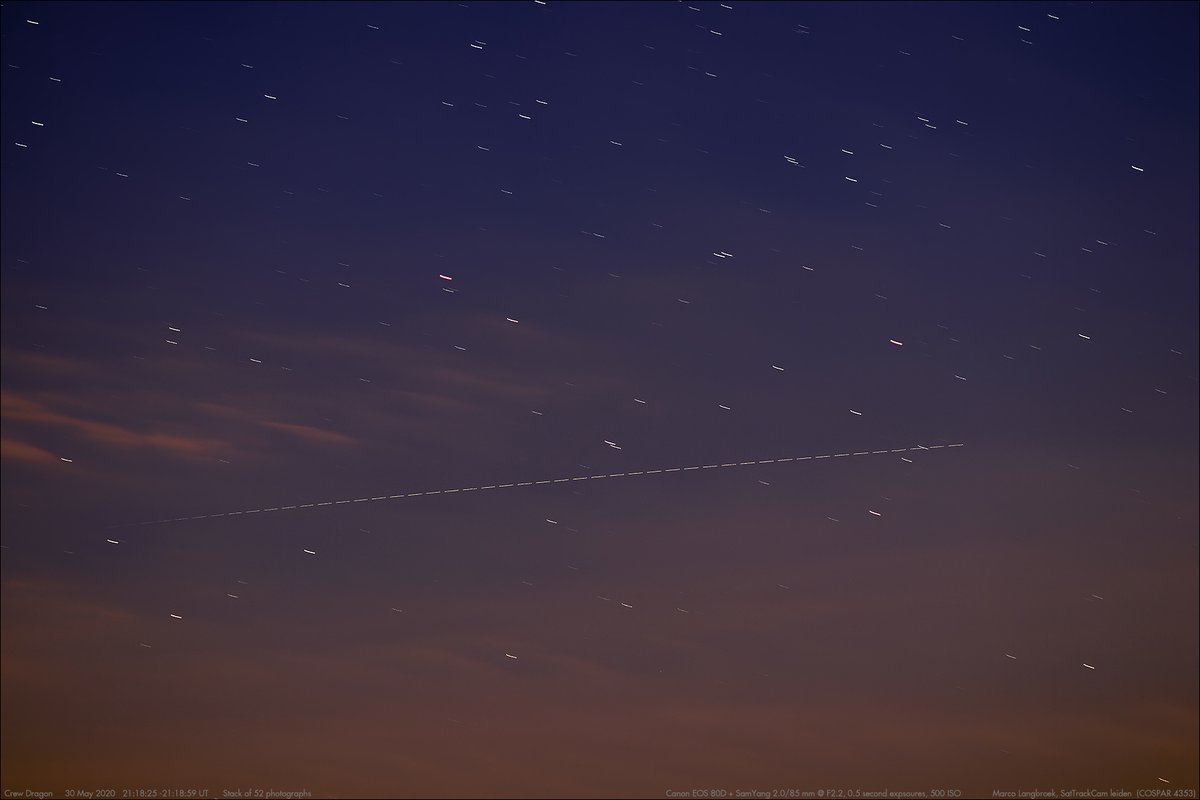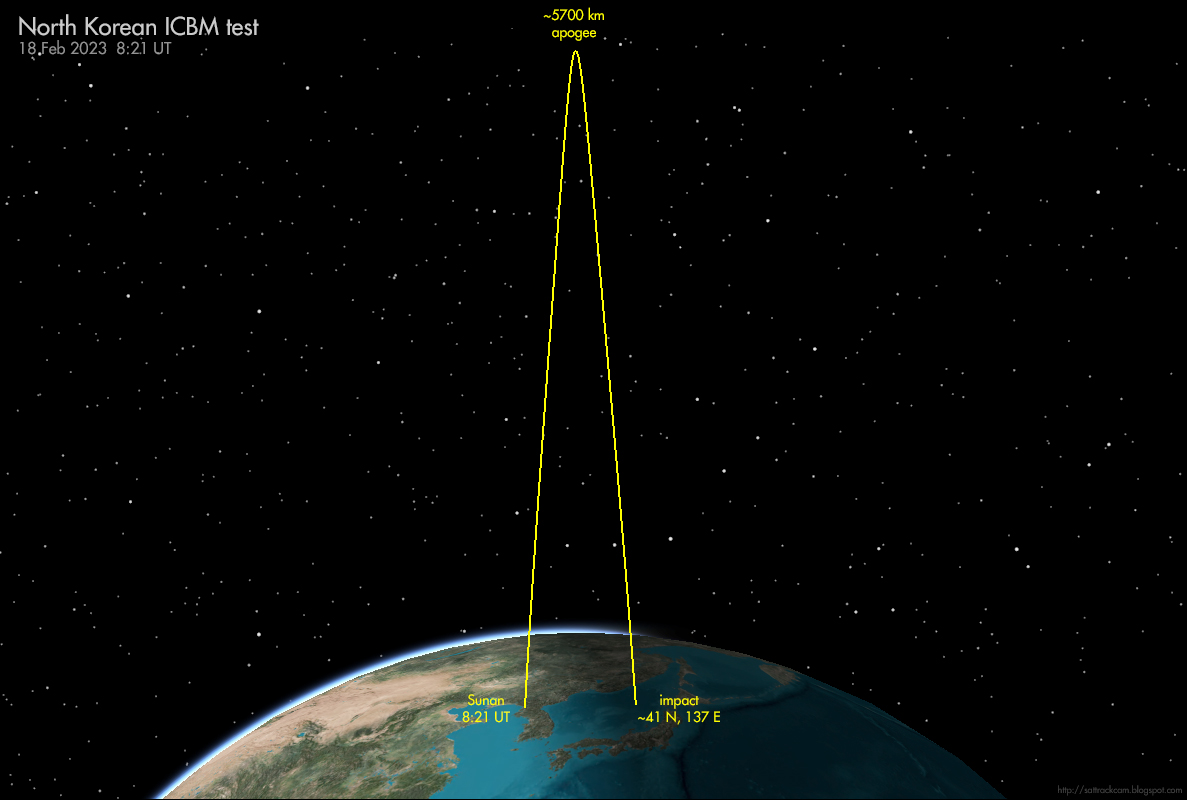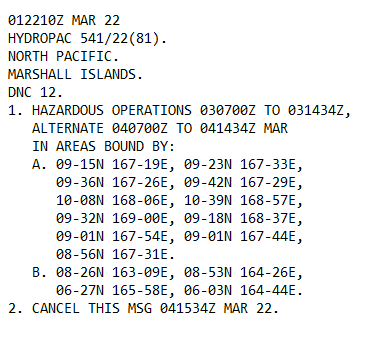Zowel #CrewDragon als ISS gezien vanuit Polderpark Cronesteyn, Crew Dragon rond 23:18 met 10x50 verrekijker, ISS met blote oog. CrewDragon rond mag +3 a +3.5 maar op die hoogte zie je dat met blote oog niet meer. Hemel was nog lichter dan ik had gedacht.
En ook op foto gevangen zie ik net. Foto's straks.
1/2
The #CrewDragon during the second revolution, 23:18 CEST, imaged very low above the horizon (9 deg elevation!) from Cronesteyn Park, Leiden, the Netherlands, in late twilight.
Stack of 52 photographs, Canon EOS 80D + SamYang 2.0/85 mm at F2.2, 0.5 second exposures, 500 ISO.
The #CrewDragon during the second revolution, 23:18 CEST, imaged very low above the horizon (9 deg elevation!) from Cronesteyn Park, Leiden, the Netherlands, in late twilight.
Stack of 52 photographs, Canon EOS 80D + SamYang 2.0/85 mm at F2.2, 0.5 second exposures, 500 ISO.

2/2
(image prev. tweet)
You can see the #CrewDragon disappear in Earth shadow on the left side of the image.
The gaps in the trail are the brief periods between the successive images this image stack was made of.
@govertschilling
(image prev. tweet)
You can see the #CrewDragon disappear in Earth shadow on the left side of the image.
The gaps in the trail are the brief periods between the successive images this image stack was made of.
@govertschilling
3/3
I am tired, obviously: the lens is a 1.4/85 mm set to F2.0. Apologies.
I am tired, obviously: the lens is a 1.4/85 mm set to F2.0. Apologies.
• • •
Missing some Tweet in this thread? You can try to
force a refresh













